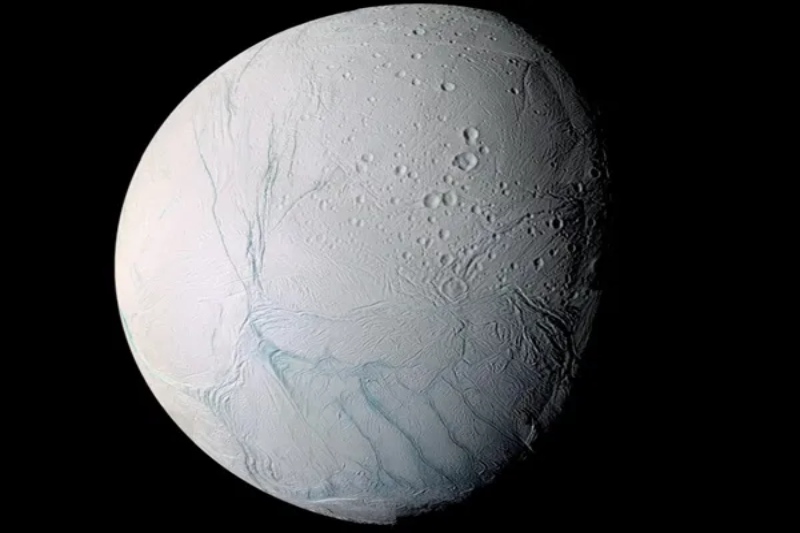Enceladus, the Cronian moon, appears to be quite small. In contrast to Saturn’s enormous, dazzling rings and enormous hexagon, it is somewhat modest and monochromatic.
However, as numerous objects in the Solar System demonstrate, looks can be quite misleading. There’s a lot more going on on Enceladus than meets the eye. The ice world may be home to far more organic molecules than previously thought, according to a recent investigation.
Enceladus spews forth molecules like methanol, ethane, and molecular oxygen from geysers welling from liquid water deep below its ice shell, according to a closer examination of data from the Saturn Cassini mission.
This finding strengthens the case for sending a dedicated mission to Enceladus in the hopes of eventually discovering extraterrestrial life. It also lends credence to the theory that the moon may support communities of microbes or even some form of biochemistry in its global ocean.
A team lead by astrobiologist Jonah Peter of Harvard University and the NASA Jet Propulsion Laboratory states, “The results presented here indicate that Enceladus is host to a multiphasic and compositionally diverse chemical environment that is consistent with a habitable subsurface ocean.”
“The [chemical] species identified in this work also suggest that this ocean may contain the necessary building blocks required to synthesize compounds important to the origin of life.”
The majority of our knowledge on Enceladus originates from the Cassini mission, which conducted research on Saturn and its satellites between 2004 and 2017. Prior to that point, not much was known about the little frozen moon Enceladus. However, during the probe’s flight through breaches in the icy surface, plumes of mist emerged, indicating the presence of a liquid ocean boiling beneath.
Water, carbon dioxide, methane, ammonia, and molecular hydrogen were among the organic components found in the plumes, according to a subsequent examination of data gathered by Cassini’s Ion and Neutral Mass Spectrometer (INMS) instrument.
However, the low mass resolution of the INMS makes it challenging to identify the less common species because there are many other ways to combine the data that could fit the data. Thus, the complete compositional profile of the plumes is still unknown.
Tom Nordheim, a planetary scientist at Jet Propulsion Laboratory, and Kevin Hand, an astrobiologist, joined Peter in attempting another run at the IMNS data. In order to determine what might be causing the patterns observed in the Cassini data, they employed statistical modeling to compare the data to a sizable library of known mass spectra.
Their findings supported previous research and also revealed a wider range of organic molecules than previously thought. These molecules included hydrogen cyanide, acetylene, and propylene, which are all connected to prebiotic chemistry, the chemistry that precedes the origin of life.
There is strong evidence to suggest that Enceladus has a hydrothermally active environment. The moon is stretched and compressed by its orbit around Saturn, which heats the moon’s interior. Even so far from the Sun, that heat energy can leak out through vents on the ocean floor, creating a conducive habitat for life. It occurs in the deep waters of Earth.
It is yet unknown whether the evidence have found indicates that life exists on Enceladus. It could just be a collection of molecules that happen to be interacting. The intriguing part, though, is that it might be quite important.
You can conduct lab tests here on Earth to try to determine whether or not Enceladus is populated, but additional exploration is really the only way to find out for sure.
As of right now, a few Enceladus missions are being considered, but nothing is official just yet. But each piece of evidence find advances our quest to travel to that foreign moon and find those extraterrestrial germs.
“Our results,” according to the investigators, “indicate the presence of a rich, chemically diverse environment that could support complex organic synthesis and possibly even the origin of life.”
Topics #Moon #NASA #Organic Molecules










